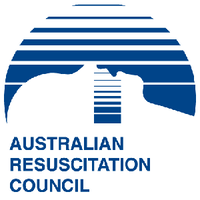Supraglottic airway (SGA)
1.8.2. Supraglottic airway – SGA
(Also known as a laryngeal mask)
 ANZCOR 2021: Guideline 13.1 and 13.5 (April 2021)
ANZCOR 2021: Guideline 13.1 and 13.5 (April 2021)
All personnel who attend births should be trained in newborn resuscitation skills which include basic measures to maintain an open airway, ventilation via a face mask or supraglottic airway (SGA) device and chest compressions. [Good Practice Statement].
ANZCOR suggests that a supraglottic airway should be considered during resuscitation of the term and near-term newborn (≥34 weeks, approximately 2000 grams) if face mask ventilation is unsuccessful. [CoSTR 2015, weak recommendation, low certainty of evidence]
The supraglottic airway may be considered as a primary alternative to a face mask for positive pressure ventilation among newborns weighing more than 2000 grams or delivered ≥34 weeks’ gestation, although there is insufficient evidence to support its routine use in this setting. [Good Practice Statement]
Supraglottic airway: Indications for use
Insertion of a supraglottic airway (SGA) may be considered in the following clinical situations to safely secure and maintain control of the airway:
- Anticipated or unexpected difficult airway
- A newborn with an airway anomaly (known or suspected)
- Face mask ventilation is unsuccessful: large mask leak/no chest rise/heart rate not improving
- Endotracheal intubation is unsuccessful
- Consider inserting an SGA after 2 intubation attempts
- Endotracheal intubation is not feasible because the personnel do not have skills in newborn intubation.
- Insertion of an SGA should be considered by medical/midwifery/nursing clinicians who are trained to insert an SGA
Suitable infants:
- Term or near-term newborns
- ≥ 34 weeks’ gestation
- ≥ 2000 g birth weight (>1500 g BW in recent published evidence)
Size:
Size 1 SGA is recommended for newborn infants up to 5kg birth weight.
An un-cuffed SGA is recommended (for simplicity of insertion)
Contradictions:
- The safety and efficacy of administering adrenaline via an SGA has not been determine and is not recommended
Equipment |
|
Types of supraglottic airways:
- Un-cuffed (preferred choice for simplicity of insertion)
- Cuffed
Un-cuffed |
Cuffed |
| i-gel®
Size 1, 2-5 kg birth weight |
Laryngeal mask airway™
Size 1, <5 kg birth weight |

i-gel® |
Supraglottic airway insertion
We have developed a short series of slides which you may wish to review on insertion of a supraglottic airway (SGA).
Supraglottic Airway_August 2021
Assessing the effectiveness of ventilation
- Use clinical signs similar to those used for endotracheal ventilation:
- Chest wall movement
- Improvement in heart rate
- Improvement in oxygenation
- In addition, the chest should be auscultated. [Good Practice Statement]
Potential adverse events/complications
- Inadequate alveolar ventilation – set PIP and PEEP may not be achieved if there is leak
- Gastric distension
- Potential for a vasovagal reaction
| Back to Endotracheal intubation | Back to Breathing | Next- Umbilical venous catheterisation |


